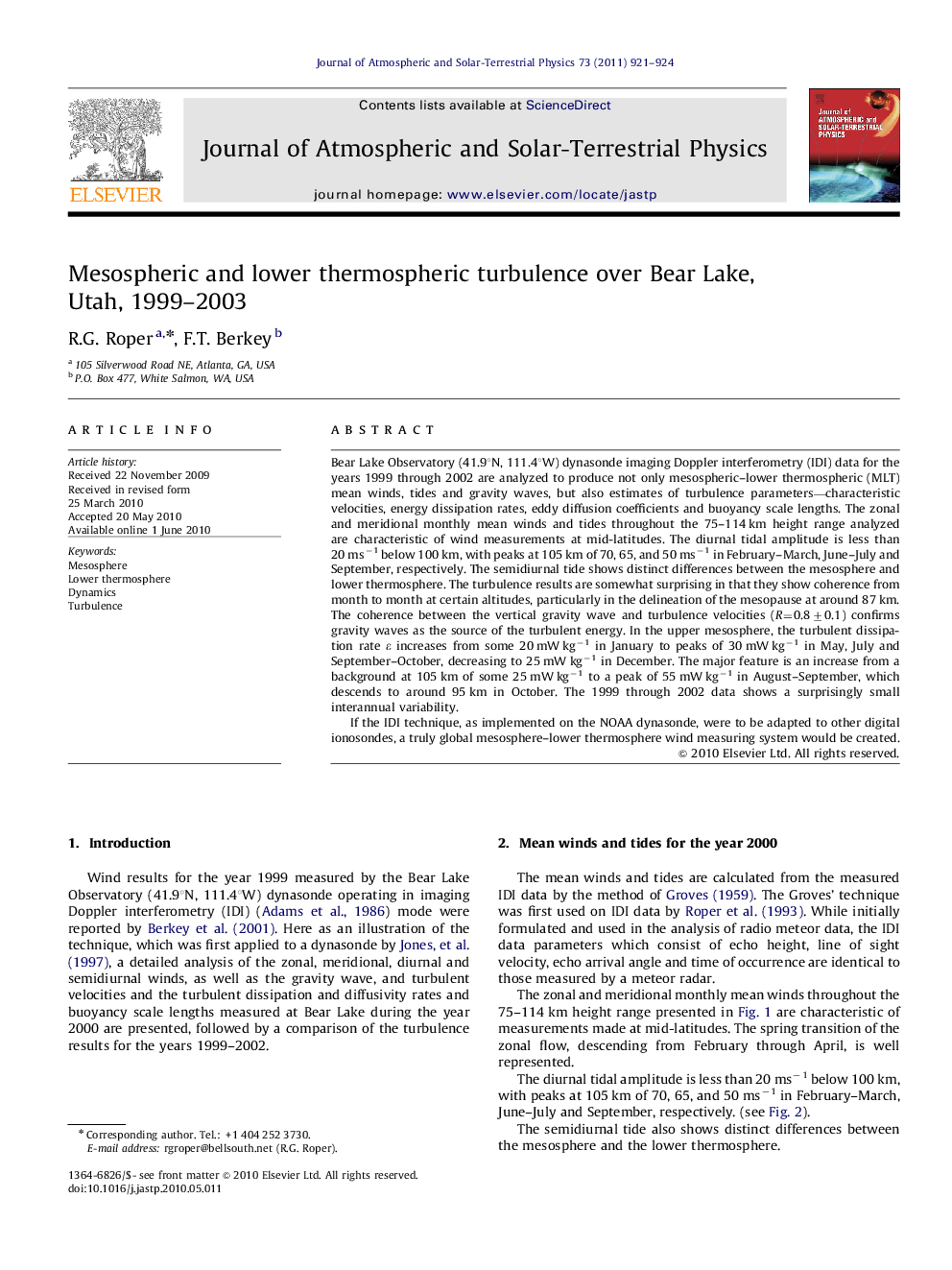| کد مقاله | کد نشریه | سال انتشار | مقاله انگلیسی | نسخه تمام متن |
|---|---|---|---|---|
| 1777210 | 1021731 | 2011 | 4 صفحه PDF | دانلود رایگان |

Bear Lake Observatory (41.9°N, 111.4°W) dynasonde imaging Doppler interferometry (IDI) data for the years 1999 through 2002 are analyzed to produce not only mesospheric–lower thermospheric (MLT) mean winds, tides and gravity waves, but also estimates of turbulence parameters—characteristic velocities, energy dissipation rates, eddy diffusion coefficients and buoyancy scale lengths. The zonal and meridional monthly mean winds and tides throughout the 75–114 km height range analyzed are characteristic of wind measurements at mid-latitudes. The diurnal tidal amplitude is less than 20 ms−1 below 100 km, with peaks at 105 km of 70, 65, and 50 ms−1 in February–March, June–July and September, respectively. The semidiurnal tide shows distinct differences between the mesosphere and lower thermosphere. The turbulence results are somewhat surprising in that they show coherence from month to month at certain altitudes, particularly in the delineation of the mesopause at around 87 km. The coherence between the vertical gravity wave and turbulence velocities (R=0.8±0.1) confirms gravity waves as the source of the turbulent energy. In the upper mesosphere, the turbulent dissipation rate ε increases from some 20 mW kg−1 in January to peaks of 30 mW kg−1 in May, July and September–October, decreasing to 25 mW kg−1 in December. The major feature is an increase from a background at 105 km of some 25 mW kg−1 to a peak of 55 mW kg−1 in August–September, which descends to around 95 km in October. The 1999 through 2002 data shows a surprisingly small interannual variability.If the IDI technique, as implemented on the NOAA dynasonde, were to be adapted to other digital ionosondes, a truly global mesosphere–lower thermosphere wind measuring system would be created.
Journal: Journal of Atmospheric and Solar-Terrestrial Physics - Volume 73, Issue 9, June 2011, Pages 921–924